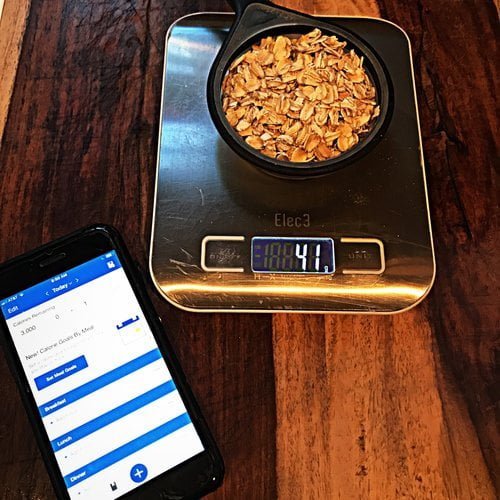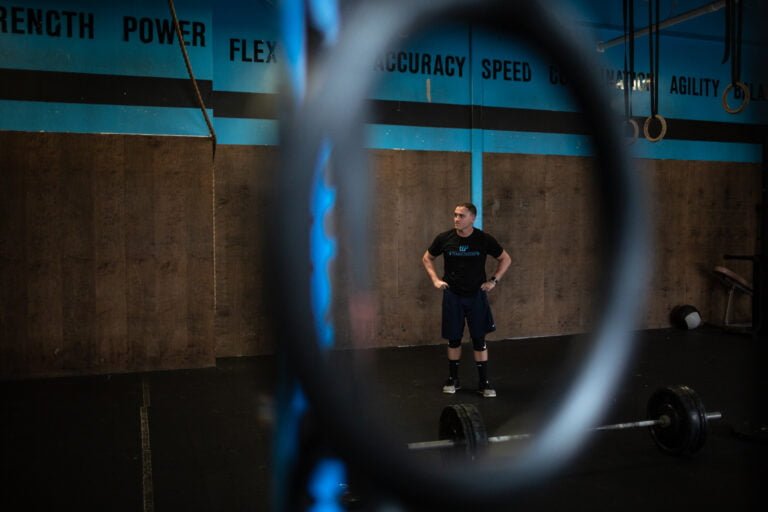4 Exercises To Improve Your Front Rack Position
The front rack position is classified as the way a barbell is held for exercises such as front squats, front rack lunges, cleans, and jerks. There is also a “front rack” position for dumbbell and kettlebell movements, but, for the purposes of this blog post, when the front rack position is referenced, it will be referring to the barbell front rack position.
The front rack position is one of those things in training that can frustrate many people. If you are new to training, it can make it difficult to learn exercises like the ones listed above. If you have been training for a while, a sub optimal front rack position will prevent you from reaching your maximal potential in these lifts. This is because the most optimal or strongest way to hold the bar will be in a front rack position where the elbows are up, the upper arms are completely parallel to the ground and the shoulder blades are protracted on the rib cage adequately.
Potentially a bigger frustration of clients is that poor front rack positioning can also cause pain at the wrist due to excessive time spent in and load on deep wrist extension. Ultimately leading clients to opt for substitute position such as a “genie” position or using straps. Both of which mask the underlying issues that prevent a solid front rack position.
Many people will attribute their wrist pain and poor front rack position to poor wrist mobility. In my experience coaching clients, this is rarely the case. The feelings of pain or tightness felt in the wrist is the manifestation of the symptoms of poor mobility upstream at the shoulder, scapula and thoracic spine.
I have found the exercises listed below to be excellent choices for clients to not only improve their front rack position, but, also maintain it during their training year since flexibility and mobility is ever changing based on the demands of the program.
Scapular Controlled Articular Rotations (CARS)
Mobility of the glenohumeral joint (shoulder joint excluding the shoulder blade) will always begin and end with the mobility of the scapula (shoulder blade). If the scapula is not able to protract on the rib cage, and move laterally, the arms will not be able to attain a position that allows the upper arms to be parallel to the floor.
To depict this, try squeezing your shoulder blades together and getting into a front rack position. It is not possible, when the scapula cannot protract adequately, this is essentially what is happening.
The scapular CAR trains scapular stability and mobility. The exercise brings the scapula through its entire range of motion with the goal being to expand the movements of retraction, protraction, elevation and depression further and further with each repetition. With protraction being our primary focus when improving the front rack position. Once this is achieved you can then load this movement to further drive stability within the newly found ranges.
Banded Latissimus Dorsi Stretch (Lat)
The extensibility of the Lat will also play a role in achieving an optimal front rack position since the it inserts onto the humerus or upper arm just below the armpit.
When the extensibility of the Lat becomes decreased due to hard training or prolonged positioning, it prevents the upper arm from flexing to the point that is needed for the front rack position.
The result is elbows that remain too low and force the wrist to hyperextend to allow you to hold the bar in the correct position. Thus, putting stress on the ligaments of the wrist that they was not designed for.
When the Lats can extend fully, the elbows can reach a parallel position to the floor and minimize the amount of extension that is needed at the wrist.
Once the elbows are capable of reaching a height where the upper arm is parallel to the floor, the Glenohumeral joint then must be able to adequately externally rotate to allow the hands to sit just outside of the shoulders on the barbell.
External rotation mobility will primarily be dictated by the extensibility of the internal rotators of the shoulder. These include, The Pectoralis Major, The Latissimus Dorsi, The Subscapularis, the Anterior Deltoid and the Teres Major.
The PVC Pipe External Rotation exercises allows all of these muscles to be stretched so that they can extend enough to allow for enough external rotation to occur to achieve an adequate front rack position.
The PVC Pipe External Rotation can also have a positive effect on the capsule of the Glenohumeral joint. When the Glenohumeral joint externally rotates, the head of the humerus travels anterior (forward) in the capsule and if that portion of the capsule is restricted then external rotation will also be restricted. This exercise can help improve the capsules extensibility and ultimately the front rack position.
Foam Roller Thoracic Extension
In any conversation, if you are speaking about improving mobility at the shoulder, you must first touch on the mobility of the thoracic spine. The Thoracic spines ability to extend is vitally important in allowing the shoulder to reach its full range of motion.
When a client wants to achieve a front rack position they must first extend through the thoracic spine to then allow the scapula to protract and the Glenohumeral joint to externally rotate.
To illustrate this, try to achieve a front rack position with elbows up and upper arms parallel to the floor while also flexing or rounding your back. I would bet that it is either impossible or clearly not an optimal position to handle any kind of load.
The foam Roller Thoracic Extension exercise uses your body weight and foam roller to create a mobilizing force for the capsules (same as in the Glenohumeral joint) around the vertebra of the Thoracic Spine to allow them to extend properly.
These are my four go to exercise for clients who complain of an inability to achieve an optimal front rack position. They can help you relieve pain at your wrist by decreasing the demand for wrist extension mobility as well as put you in an optimal position to learn the certain exercises as a beginner or hit new PR’s as an experienced lifter when the front rack position is a limiting factor for you.







